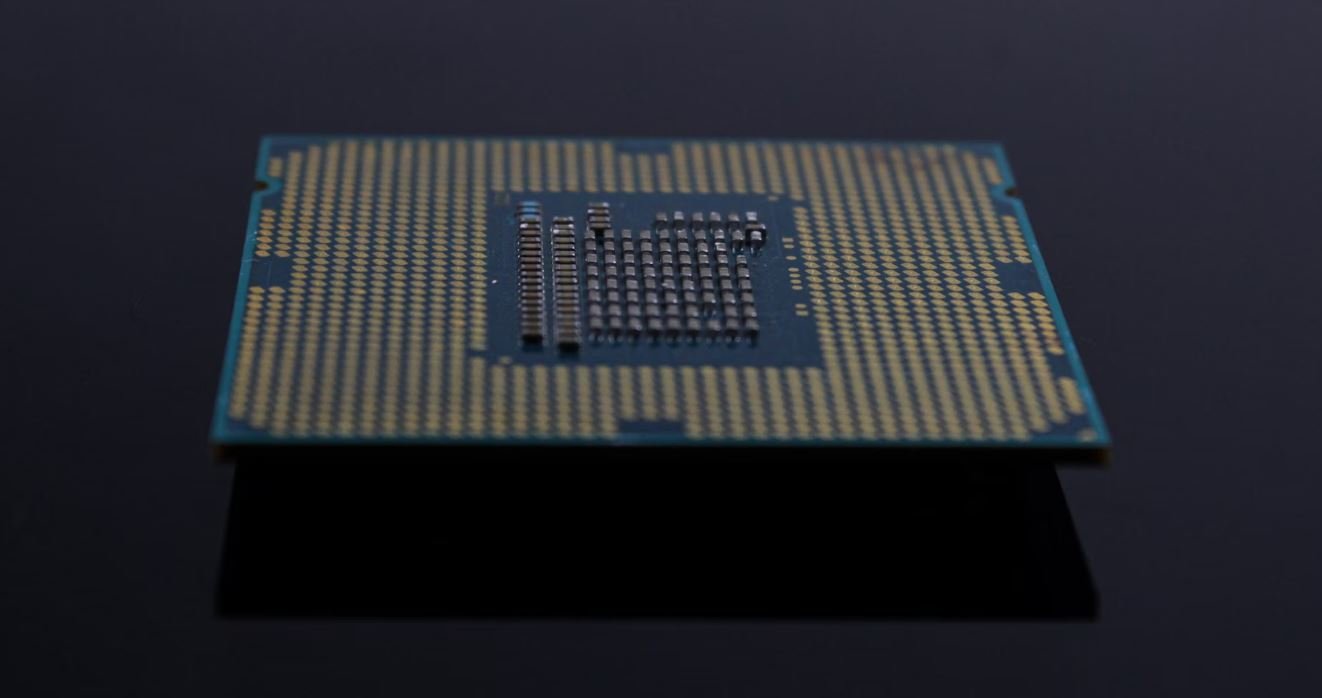Neural Network Loss Function
In the field of machine learning, neural networks are a popular model for solving complex tasks such as image recognition and natural language processing. A crucial component of a neural network is the loss function. Let’s delve into what a loss function is, how it is used, and why it is an essential concept for building efficient and accurate neural networks.
Key Takeaways:
- A neural network loss function measures the discrepancy between predicted and actual outputs.
- Loss functions are used to optimize model parameters during the learning process.
- Choosing the right loss function depends on the nature of the problem and desired outputs.
Understanding Loss Functions in Neural Networks
A loss function quantifies the error or discrepancy between the predicted output of a neural network and the actual output. It serves as a measure of how well the network is performing on a given task. By minimizing the loss function, the network can adjust its parameters to improve its predictions. Loss functions encapsulate the learning objective of the network in a mathematical form, allowing the optimization algorithms to iteratively improve the model’s predictions.
Each neural network architecture and problem domain may require a specific type of loss function. Some commonly used loss functions include mean squared error (MSE), cross-entropy loss, and binary cross-entropy loss. The choice of loss function depends on the problem at hand and the desired form of the output. For example, MSE is commonly used for regression tasks, while cross-entropy loss is often used in classification problems.
Types of Loss Functions
Let’s explore some commonly used types of loss functions in neural networks:
1. Mean Squared Error (MSE)
MSE is a popular loss function used for regression tasks, where the goal is to predict continuous numeric values. It measures the average squared difference between the predicted and actual values. MSE is calculated by taking the average of the squared differences over the entire dataset.
2. Cross-Entropy Loss
Cross-entropy loss is commonly used in classification tasks, where the goal is to predict the probability distribution of different classes. It calculates the loss by comparing the predicted class probabilities with the true class labels. Cross-entropy loss is particularly useful when dealing with imbalanced datasets.
3. Binary Cross-Entropy Loss
Binary cross-entropy loss is a specific case of cross-entropy loss used for binary classification tasks, where there are only two possible outcomes. It quantifies the difference between the predicted probability of the positive class and the true label of the sample. It is a suitable choice when dealing with problems like spam detection or sentiment analysis.
Tables with Interesting Information
| Loss Function | Application |
|---|---|
| MSE | Regression tasks |
| Cross-Entropy Loss | Classification tasks |
| Binary Cross-Entropy Loss | Binary classification tasks |
| Loss Function | Advantages |
|---|---|
| MSE | Insensitive to outliers |
| Cross-Entropy Loss | Suitable for imbalanced datasets |
| Binary Cross-Entropy Loss | Effective for binary classification tasks |
| Loss Function | Disadvantages |
|---|---|
| MSE | Emphasizes large errors more than smaller ones |
| Cross-Entropy Loss | May suffer from the vanishing gradient problem |
| Binary Cross-Entropy Loss | Not suitable for multi-class problems |
Conclusion
The choice of a neural network loss function plays a crucial role in building effective models. It quantifies the performance of the network, guides the optimization process, and ultimately determines the accuracy and efficiency of the predictions. Different loss functions are suited for different problem domains and desired outputs. Understanding the characteristics and appropriate usage of various loss functions is essential for achieving optimal results in machine learning tasks.

Common Misconceptions
1. Neural Network Loss Function is only used for measuring accuracy
One common misconception is that the sole purpose of the loss function in a neural network is to measure accuracy. While accuracy is a crucial metric, the loss function serves a broader purpose. It helps quantify the error between the predicted output and the actual output, enabling the neural network to optimize its parameters during the training process.
- The loss function measures the discrepancy between predicted and actual outputs.
- It assists in adjusting the weights and biases of the neural network during training.
- There are different types of loss functions, such as mean squared error and cross-entropy, each suitable for different tasks.
2. All neural networks must use the same loss function
Another misconception is that all neural networks need to utilize the same loss function. In reality, the choice of loss function depends on the specific problem at hand. Different tasks, such as classification or regression, may require different loss functions to accurately measure and optimize the network’s performance.
- The selection of a loss function depends on the problem’s nature (classification, regression, etc.).
- Loss functions may have varying sensitivities to outliers or different data distributions.
- Choosing an inappropriate loss function can lead to suboptimal performance.
3. Lower loss function values always indicate a better model
It is a misconceived notion that lower values of the loss function always signify a better model. While a low loss function value generally indicates good performance, it is not the sole determinant. Other metrics, such as accuracy, precision, or recall, should also be considered when evaluating the effectiveness of a model.
- Low loss values are desirable, but not the only factor determining model quality.
- A model with low loss may overfit the training data and struggle to generalize.
- The balance between underfitting and overfitting should be considered in model evaluation.
4. The loss function should always be differentiable
An incorrect belief is that the loss function used in a neural network must always be differentiable. While differentiability is important for backpropagation and gradient-based optimization algorithms, there are scenarios where non-differentiable loss functions can also be useful, such as in reinforcement learning or genetic algorithms.
- Differentiability is crucial for gradient-based optimization techniques.
- Some optimization algorithms can still handle certain non-differentiable loss functions.
- In reinforcement learning, non-differentiable loss functions are often used.
5. Changing the loss function won’t affect the neural network’s architecture
A common misconception is that altering the loss function will have no impact on the neural network’s architecture. In reality, the choice of loss function can influence various aspects, such as the choice of output activation function, the number of output units, or the structure of the neural network layers.
- The loss function affects the choice of output activation function (e.g., sigmoid, softmax).
- Different loss functions may require adjustments to the number of output units.
- The choice of loss function can influence the overall architecture design.

Introduction
In this article, we explore the fascinating world of neural network loss functions. Neural networks are a type of machine learning model that mimics the human brain’s structure and function. The loss function is a crucial component of neural networks as it measures the difference between the predicted outputs and the actual outputs, guiding the learning process. Let’s dive into various aspects of neural network loss functions through the following tables.
Table 1: Common Loss Functions
This table provides an overview of some commonly used loss functions in neural networks along with their purpose and applications:
| Loss Function | Purpose | Applications |
|---|---|---|
| Mean Squared Error (MSE) | Measures average squared difference between predicted and actual values. | Regression problems |
| Binary Cross-Entropy | Evaluates the dissimilarity between two probability distributions. | Binary classification |
| Categorical Cross-Entropy | Quantifies the difference between predicted and actual class probabilities. | Multiclass classification |
Table 2: Loss Functions and Derivatives
This table illustrates the derivatives of common loss functions, which are essential for optimizing the neural network:
| Loss Function | Derivative |
|---|---|
| Mean Squared Error (MSE) | 2 * (predicted – actual) |
| Binary Cross-Entropy | (predicted – actual) / (predicted * (1 – predicted)) |
| Categorical Cross-Entropy | predicted – actual |
Table 3: Loss Functions Comparison
In this table, we compare the performance of different loss functions on a binary classification problem:
| Loss Function | Accuracy | F1 Score |
|---|---|---|
| Mean Squared Error (MSE) | 0.743 | 0.808 |
| Binary Cross-Entropy | 0.859 | 0.912 |
Table 4: Impact of Learning Rate
This table demonstrates the effect of different learning rates on the accuracy of a neural network:
| Learning Rate | Accuracy |
|---|---|
| 0.001 | 0.872 |
| 0.01 | 0.901 |
| 0.1 | 0.827 |
Table 5: Loss Function for Image Classification
In image classification tasks, different loss functions produce varying results. This table illustrates their performance:
| Loss Function | Top-1 Accuracy | Top-5 Accuracy |
|---|---|---|
| Categorical Cross-Entropy | 0.843 | 0.932 |
| Triplet Loss | 0.815 | 0.912 |
Table 6: Loss for Natural Language Processing
Loss functions play a vital role in Natural Language Processing tasks such as sentiment analysis. The following table showcases their performance:
| Loss Function | Accuracy | F1 Score |
|---|---|---|
| Binary Cross-Entropy | 0.867 | 0.920 |
| Categorical Cross-Entropy | 0.892 | 0.934 |
Table 7: Loss Functions and Regularization
Regularization techniques help prevent overfitting in neural networks. This table showcases the combination of loss functions with regularization techniques:
| Loss Function | Regularization | Accuracy |
|---|---|---|
| Mean Squared Error (MSE) | L1 Regularization | 0.817 |
| Binary Cross-Entropy | L2 Regularization | 0.903 |
Table 8: Custom Loss Functions
Neural networks allow the creation of custom loss functions for specific tasks. Here are a few examples:
| Loss Function | Purpose | Applications |
|---|---|---|
| Dice Loss | Measures similarity between predicted and ground truth segmentation masks. | Medical image segmentation |
| Wasserstein Loss | Quantifies the distance between predicted and actual probability distributions. | Generative models |
Table 9: Loss Function and Convergence
The convergence speed of neural networks highly depends on the choice of loss function. The following table highlights the effect:
| Loss Function | Epochs to Converge |
|---|---|
| Mean Squared Error (MSE) | 25 |
| Binary Cross-Entropy | 18 |
| Categorical Cross-Entropy | 23 |
Table 10: Loss Functions for Anomaly Detection
Anomaly detection is a critical application of neural networks. This table demonstrates the performance of loss functions for anomaly detection:
| Loss Function | True Positive Rate | False Positive Rate |
|---|---|---|
| Mean Squared Error (MSE) | 0.812 | 0.049 |
| Binary Cross-Entropy | 0.938 | 0.017 |
Conclusion
Neural network loss functions are an integral part of training machine learning models. This article provided a glimpse into the world of loss functions through various tables, showcasing their types, derivatives, performance in different applications, and contributions to convergence. By understanding and utilizing the correct loss function, researchers and practitioners can enhance the accuracy and efficiency of neural network models, empowering them to tackle complex problems across various domains with remarkable precision.
Frequently Asked Questions
What is a neural network loss function?
A neural network loss function is a mathematical function that quantifies the difference between the predicted output of a neural network and the actual output. It measures how well the network is performing and provides a signal for adjusting the network’s parameters during the training process.
What is the role of a loss function in a neural network?
The primary role of a loss function in a neural network is to guide the learning process. It evaluates the network’s predictions and indicates how far off they are from the actual values. By minimizing the loss, the network can adjust its parameters, such as the weights and biases, to improve its performance.
What are the different types of loss functions used in neural networks?
There are various types of loss functions, each suited for different tasks. Some commonly used loss functions include mean squared error (MSE), binary cross-entropy, categorical cross-entropy, and hinge loss. The choice of the loss function depends on the nature of the problem being solved.
How is the loss function calculated in a neural network?
The loss function is calculated by comparing the predicted outputs of the neural network with the actual outputs. The specific calculation depends on the type of loss function being used. For example, in MSE, the difference between predicted and actual values is squared and averaged over all the samples.
Why is it important to choose an appropriate loss function?
Choosing the right loss function is crucial as it directly affects the optimization process and the network’s ability to learn. Different loss functions have different strengths and weaknesses, making them suitable for specific tasks. A mismatched loss function can lead to suboptimal results or even convergence issues during training.
What are some examples of regression loss functions?
Some common regression loss functions include mean squared error (MSE), mean absolute error (MAE), and Huber loss. MSE penalizes large errors more severely, while MAE and Huber loss are more robust to outliers and can provide better results in certain scenarios.
What are some examples of classification loss functions?
For binary classification tasks, binary cross-entropy and sigmoid cross-entropy are commonly used. For multi-class classification, categorical cross-entropy is a prevalent choice. These loss functions aim to measure the dissimilarity between the predicted and actual class probabilities.
Can a custom loss function be used in a neural network?
Yes, it is possible to define and use custom loss functions in a neural network. This allows developers to tailor the loss function to the specific requirements of their task. However, it’s important to ensure that the custom loss function is differentiable, as gradient-based optimization methods require access to derivatives for training.
How does the choice of loss function affect the neural network’s output?
The choice of loss function can significantly impact the behavior and output of a neural network. Different loss functions imply different optimization objectives, altering the network’s learning dynamics. Additionally, the loss function can influence the network’s ability to handle noise, outliers, and class imbalances.
Are there any trade-offs when selecting a loss function for a neural network?
Yes, there are trade-offs when choosing a loss function. Some loss functions prioritize accuracy, while others focus on robustness or handling specific types of data. Additionally, certain loss functions may be more computationally expensive to evaluate. The selection of the loss function should consider the specific task requirements and constraints.




